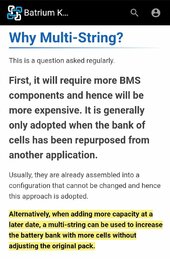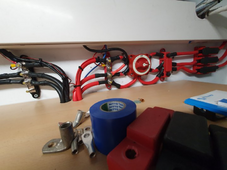Brucey
Solar Wizard
If you had a watchmon and a relay/disconnect per string, you have more fine grained control of things and potentially wouldn't have this potential series to series cascade failure.Batrium bms i thought and still think is a great bms. I have no idea why 1 central bms for 112 cells is "bad". If something is wrong with the system design, thats possible, but thats not the bms to blame, it did always a great job.
In the design you had there is no way for the Batrium to clamp down/disconnect a problematic string. All of that energy is free to do what it wants because it is all behind the single watchmon contactor. I would say the warnings that are provided in the Orion BMS documentation about parallel string without ability to disconnect individual sytings would also apply to your Batrium watchmon design but they only have a small section about system qualifications and not using breakers ambetween the multiple banks





